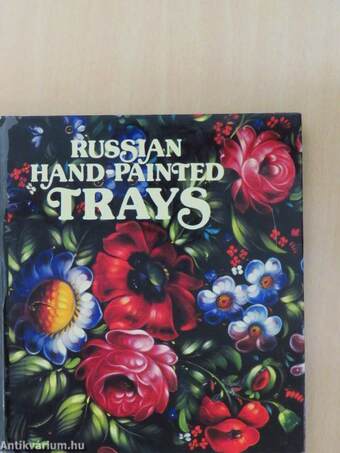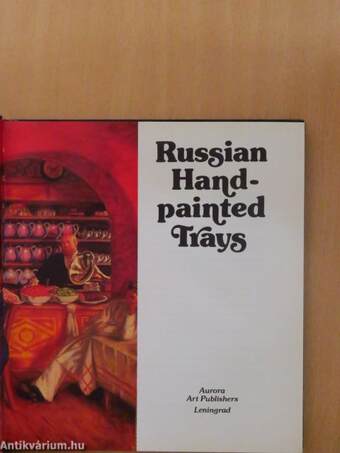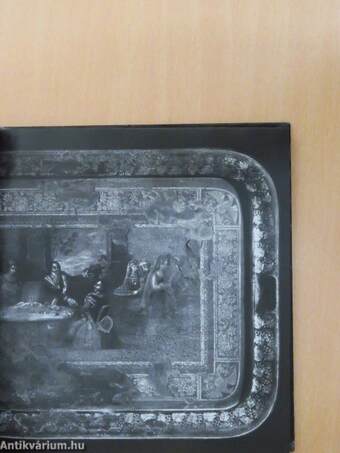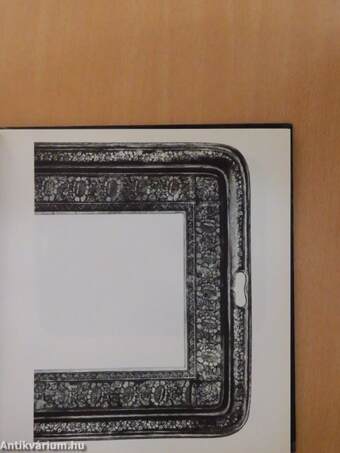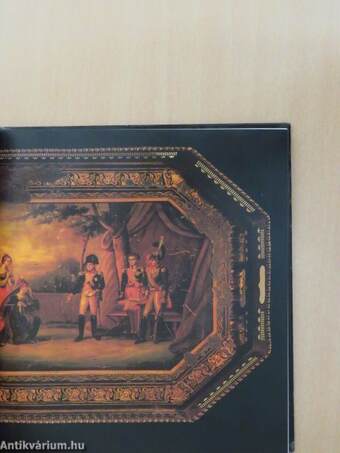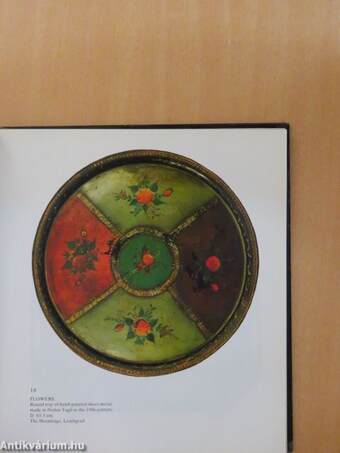1.116.679
kiadvánnyal nyújtjuk Magyarország legnagyobb antikvár könyv-kínálatát
Russian Handpainted Trays
| Kiadó: | Aurora Art Publishers |
|---|---|
| Kiadás helye: | Leningrád |
| Kiadás éve: | |
| Kötés típusa: | Fűzött kemény papírkötés |
| Oldalszám: | 174 oldal |
| Sorozatcím: | |
| Kötetszám: | |
| Nyelv: | Angol |
| Méret: | 23 cm x 21 cm |
| ISBN: | |
| Megjegyzés: | Fekete-fehér és színes fotókkal. |
naponta értesítjük a beérkező friss
kiadványokról
naponta értesítjük a beérkező friss
kiadványokról
Előszó
w
^^hether dining in style at a tavern or partaking of tea in the pri-vacy of his home, no farmer, merchant or burgher, in fact no nineteenth-century Rus-sian, would have thought the occasion... Tovább
Előszó
w
^^hether dining in style at a tavern or partaking of tea in the pri-vacy of his home, no farmer, merchant or burgher, in fact no nineteenth-century Rus-sian, would have thought the occasion complete without one of the colourful hand-painted trays which to this day continue to delight the eye in many an úrban fiat and country cottage.
The basic material of which the tray is made is a thin-plated sheet of iron, coated with several layers of priming and japanning. The resulting smooth and glossy surface produces a highly effective and pleasing sheen. In olden times the metál was cut and hammered into shape by hand; now this arduous and time-consuming operation has been completely mechanized.
The decoration, which is executed in oils, is carried out in several stages. First comes a generál notion, achieved by arranging several basic patches of colour. Then the tray is placed in a kiln and fired for several hours. After it cools, flowers and leaves are out-lined, a certain amount of shading is done, and highlights are added here and there by means of slightly tinted zinc white. Then the craftsman gives the tray a few finishing touches by tracing elegant lines around the leaves and petals, emphasizing their colour-fulness and integrating the design with the background.
The aforementioned common traditional techniques naturally bear the stamp of the craftsman's individual style; thus, highlights may be sharp and distinct or soft and blurred, while brushwork may be gentle and graceful or robust and dynamic.
Anatoly Bakushinsky, an eminent Soviet art histórián and critic, termed tray decoration "the product of rapid and inimitable improvisation".1 Actually, no craftsman
1 A.Bakushinsky, "Fedoskino and Zhostovo", in: Folk Arts and Handicrafts in the USSR, Moscow, Leningrád, 1940, p. 30 (see Bibliography). Vissza
Témakörök
- Művészetek > Népművészet
- Idegennyelv > Idegennyelvű könyvek > Angol > Művészetek > Iparművészet
- Idegennyelv > Idegennyelvű könyvek > Angol > Művészetek > Művészettörténet, általános
- Idegennyelv > Idegennyelvű könyvek > Angol > Művészetek > Népművészet
- Idegennyelv > Idegennyelvű könyvek > Angol > Néprajz
- Néprajz > Tárgyi néprajz > Népművészet > Kézművesség > Egyéb
- Művészetek > Művészettörténet általános > Kontinensek művészete > Orosz
- Művészetek > Művészettörténet általános > Idegen nyelv > Angol
- Művészetek > Iparművészet > Összefoglalók, tanulmányok > Külföldi
- Művészetek > Iparművészet > Története > Külföldi
- Művészetek > Iparművészet > Idegen nyelv > Angol
- Művészetek > Iparművészet > Fém-, ötvösművészet > Edények
- Művészetek > Iparművészet > Fém-, ötvösművészet > Fémművesség
- Művészetek > Iparművészet
Megvásárolható példányok
Nincs megvásárolható példány
A könyv összes megrendelhető példánya elfogyott. Ha kívánja, előjegyezheti a könyvet, és amint a könyv egy újabb példánya elérhető lesz, értesítjük.


